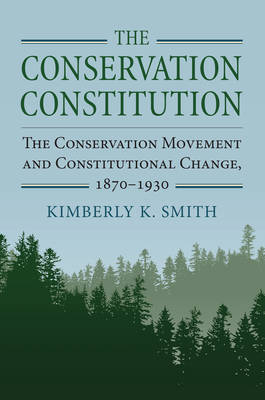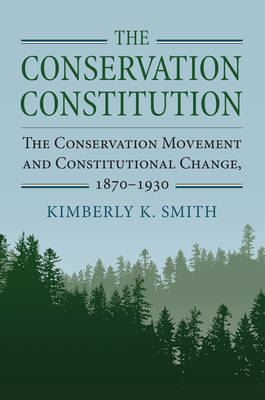
- Retrait gratuit dans votre magasin Club
- 7.000.000 titres dans notre catalogue
- Payer en toute sécurité
- Toujours un magasin près de chez vous
- Retrait gratuit dans votre magasin Club
- 7.000.0000 titres dans notre catalogue
- Payer en toute sécurité
- Toujours un magasin près de chez vous
The Conservation Constitution
The Conservation Movement and Constitutional Change, 1870-1930
Kimberly K Smith
101,95 €
+ 203 points
Description
Over the course of the twentieth century, the United States emerged as a global leader in conservation policy--negotiating the first international conservation treaties, pioneering the idea of the national park, and leading the world in creating a modern environmental regulatory regime. And yet, this is a country famously committed to the ideals of limited government, decentralization, and strong protection of property rights. How these contradictory values have been reconciled, not always successfully, is what Kimberly K. Smith sets out to explain in The Conservation Constitution--a book that brings to light the roots of contemporary constitutional conflict over environmental policy. In the mid-nineteenth century, most Progressive Era conservation policies would have been considered unconstitutional. Smith traces how, between 1870 and 1930, the conservation movement reshaped constitutional doctrine to its purpose--how, specifically, courts and lawyers worked to expand government authority to manage wildlife, forest and water resources, and pollution. Her work, which highlights a number of important Supreme Court decisions often overlooked in accounts of this period, brings the history of environmental management more fully into the story of the US Constitution. At the same time, illuminating the doctrinal innovation in the Progressives' efforts, her book reveals the significance of constitutional history to an understanding of the government's role in environmental management.
Spécifications
Parties prenantes
- Auteur(s) :
- Editeur:
Contenu
- Nombre de pages :
- 320
- Langue:
- Anglais
- Collection :
Caractéristiques
- EAN:
- 9780700628445
- Date de parution :
- 25-10-19
- Format:
- Livre relié
- Format numérique:
- Genaaid
- Dimensions :
- 157 mm x 236 mm
- Poids :
- 680 g

Les avis
Nous publions uniquement les avis qui respectent les conditions requises. Consultez nos conditions pour les avis.






